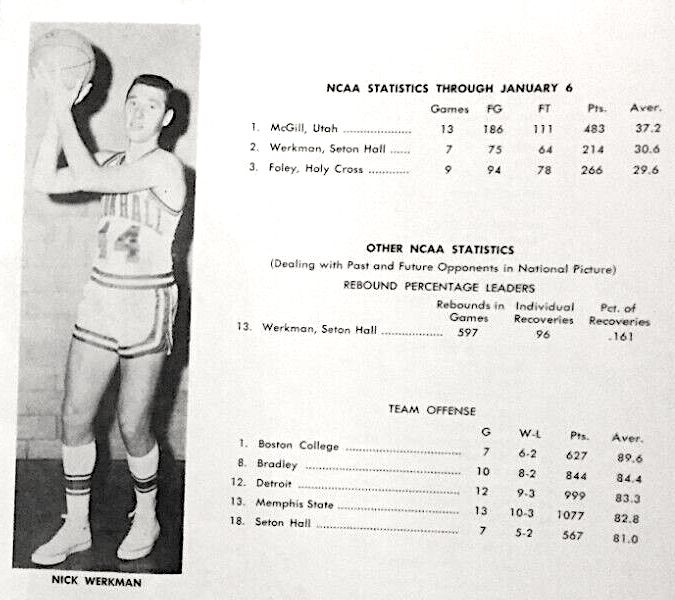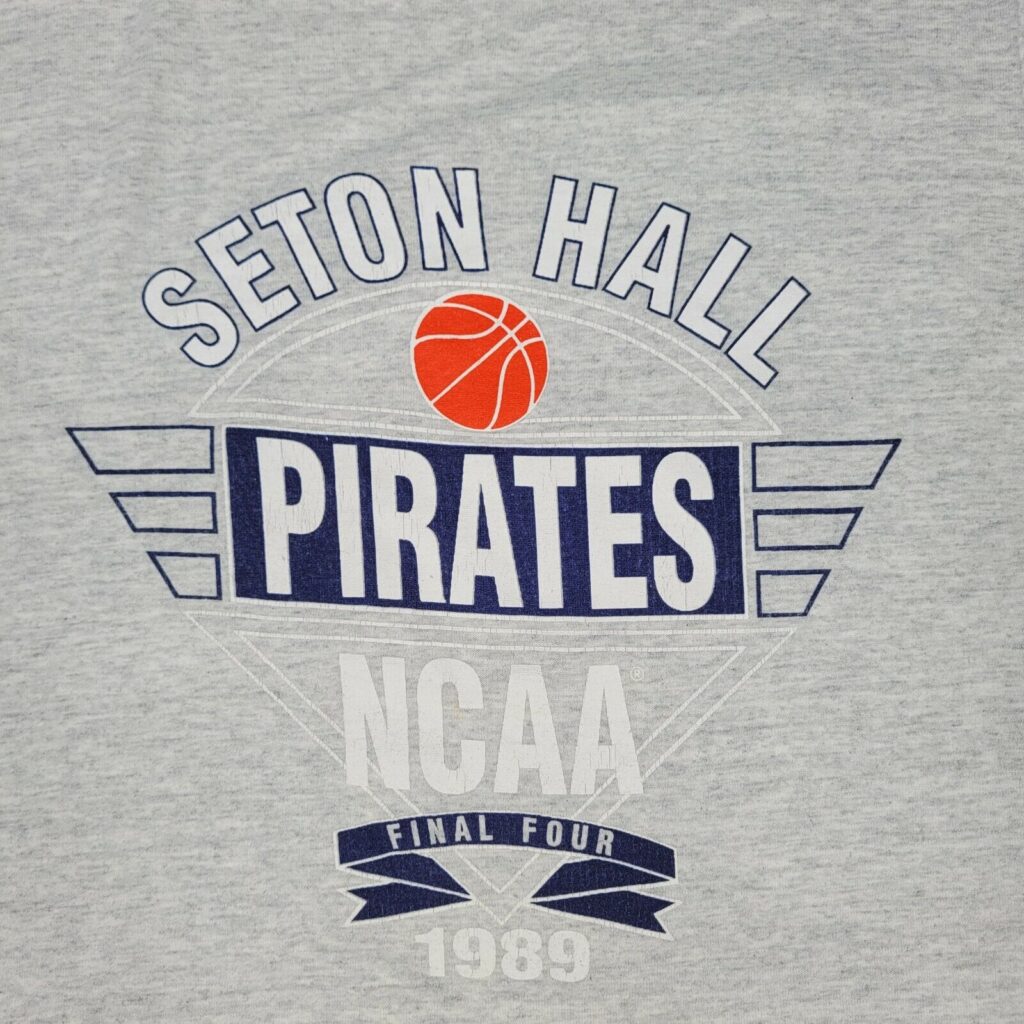Seton Hall College in South Orange fielded its first sports teams in the 1880s, starting with football and adding baseball in the 1890s. Basketball was added in the early 1900s and, with the arrival of coach Frank Hill in 1911, the program began gaining momentum. Playing between 10 and 20 games a year as an independent, the basketball team had only one losing season between 1911 and 1933.
Basketball went from an afterthought to obsession on campus when Honey Russell arrived to coach the team for the 1936–37 season. Russell was a nationally known pro basketball star who had quit to coach the Pirates. By 1940, they were arguably the best team in the country with flashy Bob Davies leading the club. The “Wonder Five” went 19–0 in 1939–40 and at one point put together a multi-season winning streak that stretched to 41 games. In 1941, Seton Hall received its first NIT bid. Later in the 1940s, Bobby Wanzer and Pep Saul starred for the team.
After the war, Russell left South Orange to coach the Boston Celtics, but returned to the sidelines in 1949 and molded the Pirates into a regional powerhouse. In 1952–53, powered by Walter Dukes, Harry Brooks and Richie Regan, they went 31–2 and beat Niagara, Manhattan College and St. John’s to win the NIT. They finished the season with a #2 national ranking.

Regan coached the Pirates during the 1960s and had great success early in the decade with a team starring Nick Werkman. The Hall’s fortunes fell after that, but were revived by Bill Raftery, who coached the Pirates for more than a decade, starting in 1970–71. Among his more prominent players were Nick Galis and Glenn Mosley. In 1979, Seton Hall became a charter member of the Big East. The exposure of a highly competitive conference began luring top talent to South Orange.

Starting in the 1980s, under PJ Carlesimo, Seton Hall began building a basketball program that eventually rose to national prominence. Danny Callandrillo starred for the team in the early 1980s, and was the school’s first Big East Player of the Year, in 1982. The Pirates earned their first NCAA Tournament bid in 1988 and, one year later, John Morton, Andrew Gaze, Ramon Ramos, Daryll Walker and Anthony Avent propelled the team into the national championship game. They fell to Michigan in overtime, 80–79. The lightly regarded Pirates had begun the season unranked. No one would ever underestimate them again.
In the years that followed, the Pirates returned to the Big Dance several times, reaching the Elite 8 in 1991 and the Sweet 16 in 1992. Carlesimo coached Seton Hall through the 1993–94 season, developing Oliver Taylor and 1993 Big East Player of the Year Terry Dehere. Tommy Amaker led the Pirates to another Sweet 16 appearance in 2000. Among Amaker’s notable players was Eddie Griffin, who had a monster freshman year in 2000–01. Louis Orr and Kevin WIlliard also assembled winning teams for Seton Hall in the 2000s. Notable players in the 21st century included Shaheen Holloway, Fuquan Edwin, Isaiah Whitehead, Myles Powell and Alexander Mamukelashvili. Seton Hall finished first in the Big East in 2020 and won the Big East Tournament in 2016.